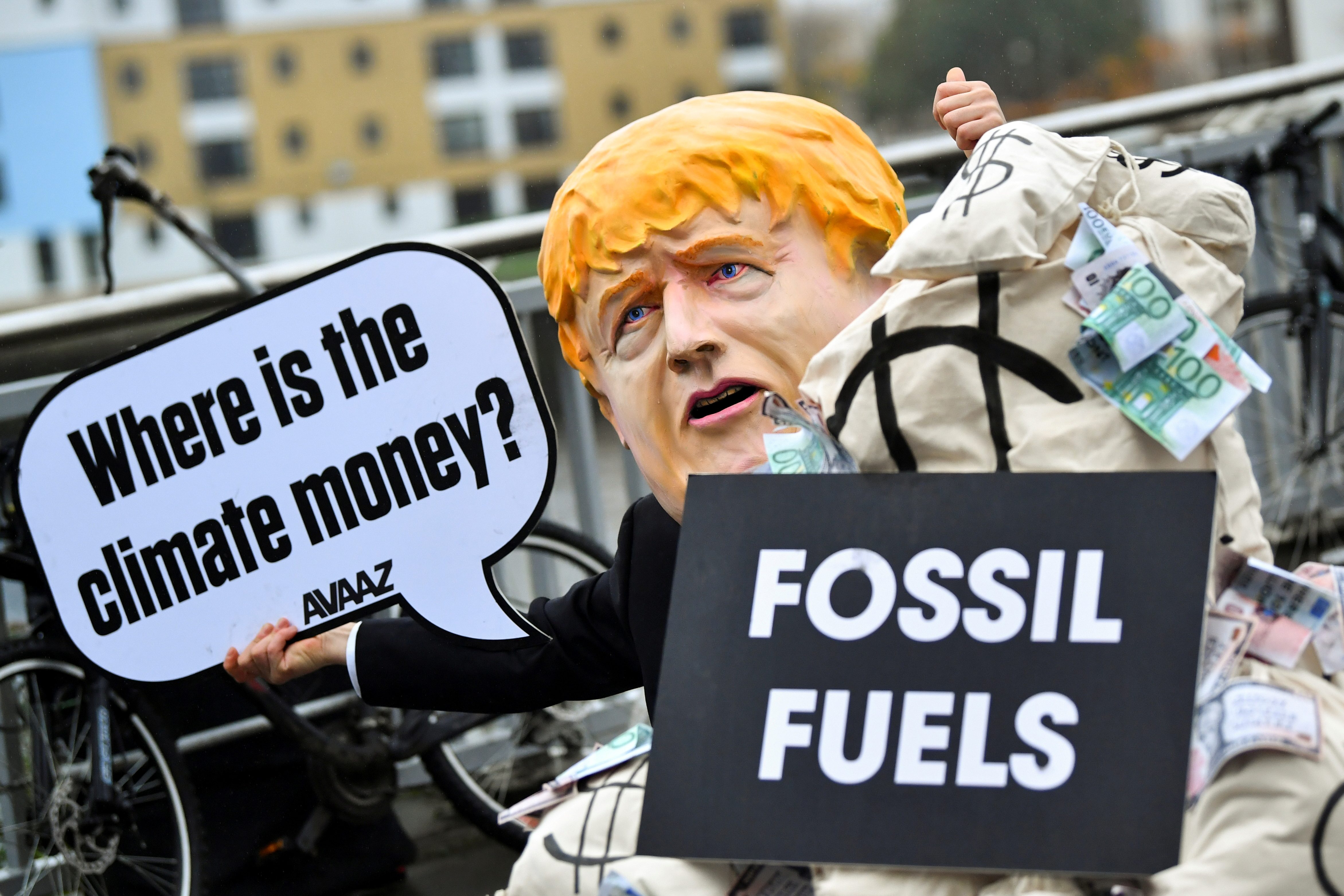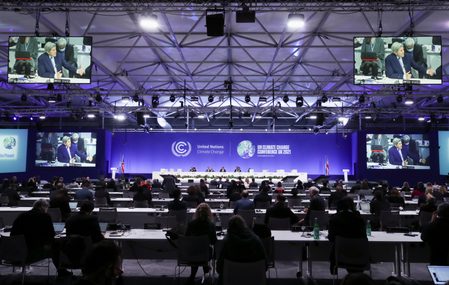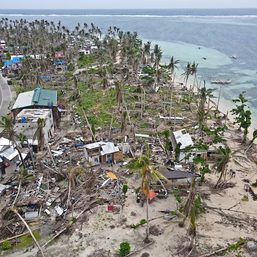SUMMARY
This is AI generated summarization, which may have errors. For context, always refer to the full article.

Negotiators closed a deal to settle rules for carbon markets at the UN climate talks in Scotland on Saturday, November 13, potentially unlocking trillions of dollars for projects to help curb climate change.
The final deal adopted by nearly 200 countries will implement Article 6 of the 2015 Paris Agreement, allowing countries to partially meet their climate targets by buying offset credits representing emission cuts by others.
Companies as well as countries with vast forest cover had pushed for a robust deal on government-led carbon markets in Glasgow, in the hope of also legitimizing the fast-growing global voluntary offset markets.
Critics worry that offsetting could go too far in allowing countries to continue emitting climate-warming gases, making some wary of a hasty deal.
The accord managed to overcome a series of sticking points that contributed to the failure of the previous two major climate meetings.
On the disagreement over how certain carbon trades should be taxed to fund climate adaptation in poorer nations, the deal offered a compromise with a two-track approach.
Bilateral trades of offsets between countries will not face the tax. The deal suggests developing nations capitulated to rich nations including the United States, which had objected to demands for the levy.
In a separate centralized system for issuing offsets, 5% of proceeds from offsets will be collected to go toward an adaptation fund for developing countries.
Also in that system, 2% of the offset credits will be canceled. That aims to increase overall emissions cuts by stopping other countries using those credits as offsets to reach their climate targets.
Old credits
Another provision resolved how to carry forward carbon credits created under the old Kyoto Protocol, the Paris Agreement’s predecessor, into the new offset market system.
Negotiators reached a compromise that sets a cut-off date, with credits issued before that date not being carried forward.
The final accord carries over any offsets registered since 2013. That will allow 320 million offsets, each representing a tonne of CO2, to enter the new market, according to an analysis by the NewClimate Institute and Oko-Institut non-profit organizations.
Campaigners had warned against flooding the new market with old credits, and raised doubts about the climate benefits of some.
The 2013 date “is not good. So now it will be buyer countries’ jobs to just say ‘no’ to them,” said carbon markets expert Brad Schallert, with the World Wildlife Fund.
One of the most contentious points had been on the question of whether credits could be claimed by both the country selling them and the country buying.
A proposal by Japan resolved the issue and gained backing from both Brazil and the United States. Brazil’s past insistence on allowing double counting had torpedoed an Article 6 deal in the past.
Under the deal, the country that generates a credit will decide whether to authorize it for sale to other nations to count towards their climate targets.
If authorized and sold, the seller country will add an emission unit to its national tally and the buyer country will deduct one, to ensure the emissions cut is counted only once between countries.
The same rules apply to credits used more broadly toward “other international mitigation purposes” – wording that some experts said could include a global scheme for offsetting aviation emissions, ensuring double counting does not happen there too.
Matt Williams, a climate expert at the Energy and Climate Intelligence Unit, said the final deal was better but not perfect.
“We’ve seen the worst possibilities for double counting of emissions cuts tightened up or guarded against. It doesn’t mean it’s ruled out completely.” – Rappler.com
Add a comment
How does this make you feel?






![[OPINION] Grading Marcos admin’s performance on the climate agenda](https://www.rappler.com/tachyon/2024/06/grading-marcos-performance-climate-agenda-june-25-2025.jpg?resize=257%2C257&crop=441px%2C0px%2C1080px%2C1080px)
![[OPINION] No room for ‘business as usual’ in era of climate emergency](https://www.rappler.com/tachyon/2024/06/no-room-business-as-usual-climate-change-june-25-2024.jpg?resize=257%2C257&crop_strategy=attention)
![[OPINION] Climate finance: A call to action for the Philippines](https://www.rappler.com/tachyon/2024/05/tl-climate-finance.jpg?resize=257%2C257&crop=458px%2C0px%2C1080px%2C1080px)







There are no comments yet. Add your comment to start the conversation.